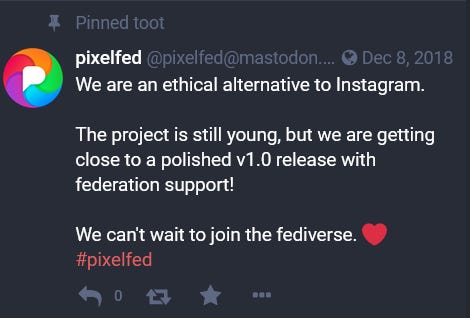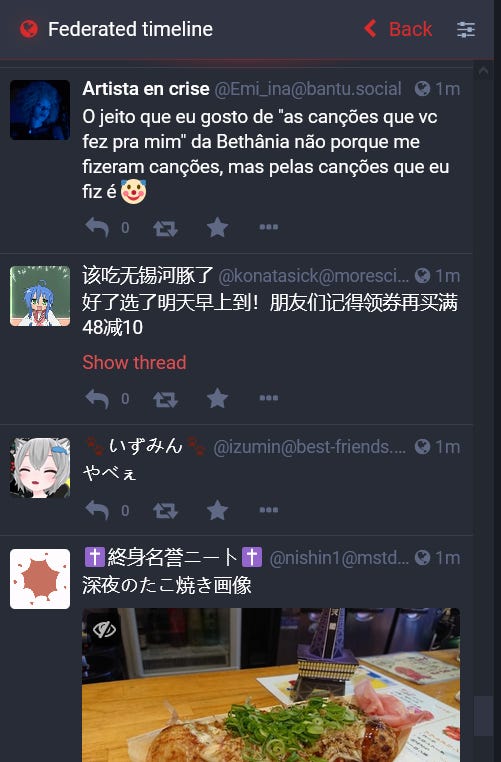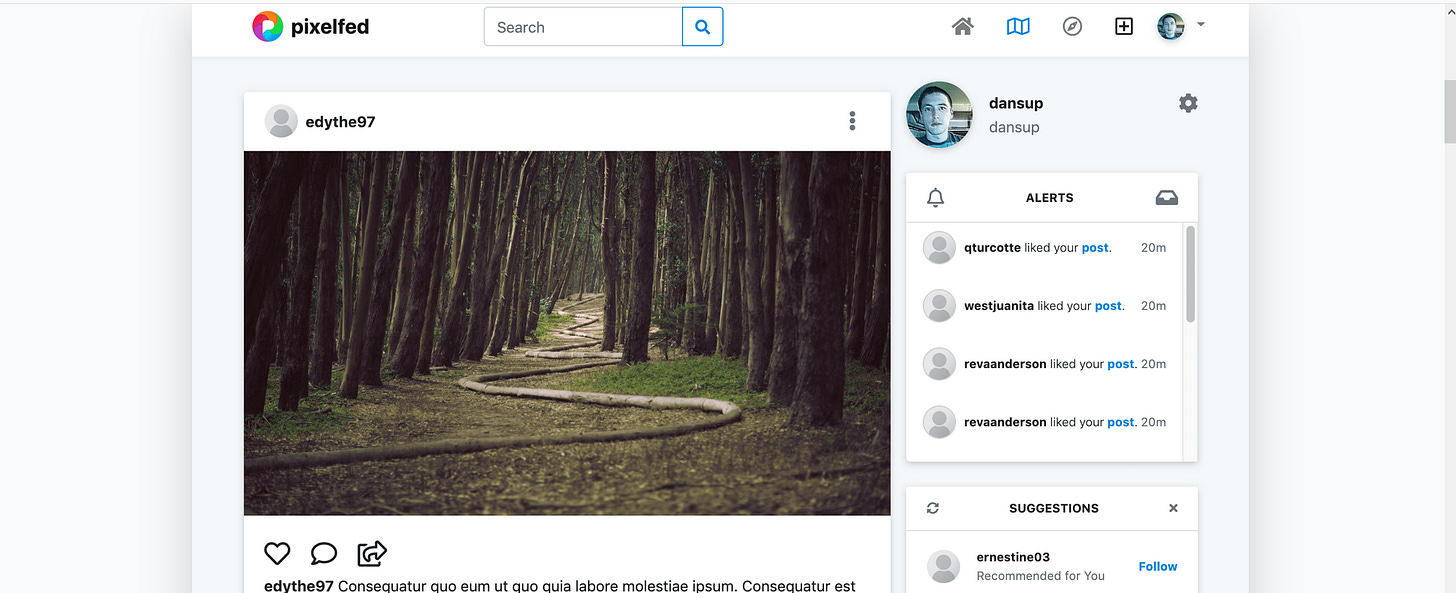The term “fediverse” has been tossed around in some tech publications recently; what does it actually mean? It’s a generalized term for social networks that are “federated,” i.e. using interconnected servers. The term refers to a number of different social networks that are based on an open source, decentralized social networking protocol called ActivityPub. There are quite a few social networks based on ActivityPub, but one of the most popular is Mastodon, whose homepage is at Join Mastodon.
Mastodon has an interface similar to Twitter, but unlike the latter, it is:
…a network of thousands of communities operated by different organizations and individuals that provide a seamless social media experience.1
Mastodon’s creator is a programmer named Eugen “Gargron” Rochko. The various Mastodon servers are referred to as “instances,” each of which has a different theme with a variety of communities. For example, stereodon.social is an Italian music-oriented instance. Mstdn.social is a general instance with no particular theme, although many of its users do seem to like cats.
As on Twitter (which many Mastodon users refer to as “birdsite” or “birdshite”), Mastodon is a microblogging platform, consisting of short posts called “toots,” which are analogous to “tweets.” Because the servers on Mastodon are interconnected, however, users on different instances can toot to one another, despite not being on the same site. By default, when someone sends you a toot, Mastodon makes a little “blip” notification sound; this also occurs when someone likes a toot. Toots can also use “emojos,” which is the Mastodon name for emojis. Each Mastodon instance has its own set of emojos, and administrators can add custom emojos if they like.
The Mastodon equivalent of “retweeting” is called boosting. Again, because of its federated aspect, when someone boosts a toot, all of their followers can see it on the different instances. The boost button looks like a circle with arrows, as in the screenshot below.
The concept of “instances” may be confusing, however. In a sense, it is similar to email. If two email users have different email providers, they can still send messages to one another despite being on these different providers. Mastodon is quite a bit like this. If one user is on mstdn.social and another is on birb.site, they can follow one another and toot to one another.
When sending a toot, Mastodon has several privacy options: you can make it public, i.e. anyone can view it, or you can make it unlisted, i.e. it won’t appear in public timelines, you can make it followers-only, i.e. only your followers list can view it, or you can send it as a private message.
Also, an important aspect of Mastodon social networking is the “CW” option (content warning). Users apply this when a toot may contain sensitive content, such as politics, abuse, eye contact,e or mental health issues (usually abbreviated as “mh”). Images can also be marked as “sensitive,” which blurs them; users can choose to view them or not in this case.
The paper clip icon is used for attaching media, like photos or videos. When attaching media, Mastodon also has the option of describing images for the visually impaired. You can type in a description manually, or if the image contains text, the site will attempt to auto-detect the text in the picture. While not required, doing image descriptions (like CWs) is considered to be good fediverse etiquette (a.k.a. “fediquette”)!
Next to the image attachment is the “poll” option. Polls are short questionnaires in which users can choose an answer from 2-4 options (by default). While some of these are serious, many users also do humorous or surreal polls as well.
Mastodon and other platforms on the fediverse also have what’s called a “federated timeline,” on which you can view posts from many different platforms on the fediverse:
Toots that appear on the federated timeline are designated as “public,” and thus anyone can view them. The one exception to this is if an instance has “defederated” from another, i.e. their administrator has chosen not to be connected to that instance anymore. This often happens when content on another instance is deemed to be offensive in some way (e.g. racist, ableist or xenophobic). As opposed to Twitter, however, this usually happens on a case-by-case basis, rather than being an overarching decision by a single company. Instances are usually very clear about what types of content are allowed or not allowed on their site during the registration process, to prevent any confusion.
Pixelfed
Pixelfed is another platform on the fediverse, which is an open source, federated version of Instagram. Like Instagram, it is used for photo and video sharing, but as on Mastodon, it consists of many different instances that have various themes or use a variety of languages. Some of the instances include: pixelfed.nz, pixel.netzspielplatz.de, and cliq.buzz. Also, like Mastodon, some of these instances have hundreds of users, while others have just one or two.
Pixelfed does have many aspects in common with Instagram. For instance, it has a timeline, in which you can scroll through your feed, and also allows you to like and comment on posts. In addition, it uses hashtags, of which you can follow your favorites.
Unlike Instagram, though, on Pixelfed, you can “share” others’ posts, which is equivalent to boosting on Mastodon. Also, you can follow a Pixelfed account from a Mastodon account, even though they are on different platforms. Most significantly, Pixelfed doesn’t have ads in its feed.
For many, the simple fact that Pixelfed isn’t owned by Facebook is a huge plus. In fact, this is the draw for quite a few of the fediverse platforms. Also, depending on the instance, some Pixelfed accounts will share adult content (this is true of Mastodon as well). This is part of the reason that the content warning feature exists!
Pleroma
Pleroma, like Mastodon and Pixelfed, also uses the OStatus and ActivityPub protocols, and in some ways, works similarly. It, too, is a platform for federated microblogging. Even so, it has a number of subtle differences from the other two.
Giving social networking back to you - Mastodon https://joinmastodon.org/










